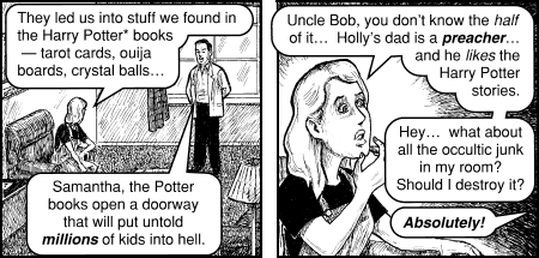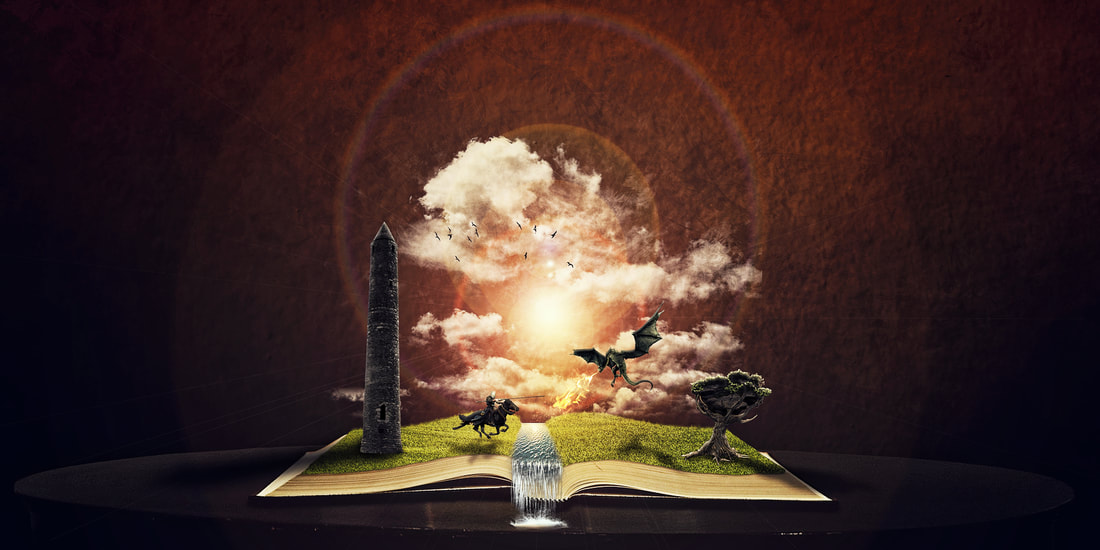 A fissure has formed in the book community as of late, and over a topic we don’t often assign to the average bookworm: censorship. Reviewers have grown more passionate about defending diverse books and criticizing common racial/LGBT pitfalls that less diverse authors fall into. This was a great, purposeful movement,… until it became a weapon. Popular reviewers and bloggers began leading hunts after writers and books they deemed ‘problematic’, full of 1-star reviews and call-out blogs. Readers were told not to buy, or read, or even speak positively of books the community found troubling or questionable. This ‘problematic’ label now ranges from actual poor representation to lead characters who simply don’t align with upstanding morals/beliefs- it’s even been directed at book before they’ve released in ARC. This aslso came a very anti-classic novel movement, aiming to snub the patriarchal roots of fiction found in the likes of Hemingway and Updike. The lines have been drawn, and many people have come out with criticism over the movement. Likewise, there are authors, agents, and reviewers that defend the movement’s core idea is being upheld. The image that comes to mind for community censorship is not usually a group of awkward bookish teens, but the conservative Midwestern housewife, storming into her son’s school after she’s discovered the many uses of N-word in To Kill a Mockingbird, or all the course language and scary content of Bridge to Terabithia. This happens every year, after all. It’s a culture of church pamphlets that scare parents away from Harry Potter and Golden Compass, or whispered fear of why someone won’t read Kurt Vonnegut. Community censorship isn’t new, but do we actually serve progressive writing and diverse works with it? Are works of the past, or difficult topics, now impossible to broach in this ‘more sensitive’ era? Doubtful. If the aforementioned books can survive controversy, then so will many of the recent troublemakers. If a book stirs something in the world, chances are it’s worth reading- if only to see why it stirred up said reaction. If the combatants of problematic books meant to taper down interest, it failed with novels like Carve The Mark, The Black Witch, and All The Crooked Saints, all of which sold brilliantly. And that’s not to say these books are immune to criticism; indeed, we should discuss the ideas behind a bigoted character taking a lead role, or a white author writing outside of their race or culture. We should discuss the pitfalls and merits to these kinds of books, but the key word is “discuss”: not “banish.” If we’re truly being supportive of diversity, we have to learn to critique without bashing. We also have to read older works with an understanding of what is historical, and therefore may not age well by our standards. Most of all, we need to remember that authors are just people (albeit weird people) who do not usually mean to attack in their portrayals or narratives. I suspect internet culture buries this etiquette in the face of personal opinion and virtue signaling, but I still find it exists. Fostering this mindset is so important these days, simply because one of the biggest issues in censorship is that people simply refuse to read widely enough. Like the man who never leaves his small American hometown, limited reading makes a limited reader. Yes, there’s a lack of proper representation in popular fiction, a selection of books that makes up about 0.11111111% of what books you can buy. There are scores of incredible indie and less well promoted books, written by authors from all walks of life, about characters and stories from all over the world. These books not only deserve your reviews, but the market will continue to have a hard time changing untilpeople make an effort to positively support these kinds of books and buy them. Be the change you wish to see realized. The same goes for your experience with classic fiction. You can’t just disregard the eras past fully, where Oscar Wilde and Virginia Woolf, notable LGBT authors, reside. Or how about Jane Austen, Charlotte Perkins Gilman, and Christina Rossetti, incredibly feminist voices of their day? Shakespeare himself explored complex themes with race, homosexuality, and gender roles in an era we often don’t associate with progressive anything. Are these old works flawless in their pursuits? No, and many of them are marked with their era’s views, and the same will happen with the works of the 21st century. In Shakespeare’s time, readers found Chaucer unreadable, troubled, and dated. A hundred years from now, groups of scholars will study our scores of YA books and chat box novels, and students will scoff that these works: “how dated! How problematic! Why would they even think this way?” There are few paths to a perfect, truly “unproblematic” book- and why would we want our characters perfect and unbiased anyway? Humanity is flawed, people are messy and sometimes wrong. When we have characters that are the same way, it allows an audience to reflect on that wrongness through the lens of fiction. Old books also allow us a glimpse a past and an understanding of it, so that we might do better. That should be the purpose of the hard, controversial, and downright upsetting. If we are never challenged, then we never truly reflect. And I suppose that’s a good question to ask one’s self: if a book or character stirs anger in my soul- if I feel the need to hide away from it, what exactly am I hiding from? What truth do we see, looking back at us from those pages?
0 Comments
 “Reading is easy. I just don’t have time.” I hear this at least once or twice during my year, often more now that I’m in college, where fellow students are assigned multiple novels during a semester. They will probably skirt by through SparkNotes, skim their books, and follow the movie versions for an easier, two-hour viewing. “Reading is easy,” yet many of us would rather do anything but settle in to read something in-depth for a few hours. Reading consumes time and takes effort- save for maybe the lightest fair that makes up your local grocery store’s books, abound with James Patterson and Nora Roberts. For something that’s gained the reputation of being easy, we sure treat reading like a Herculean task in our day. In many ways, people speak of reading the exact same way the speak of writing: “anyone can do it, but I’d rather not.” So perhaps we should reframe what reading is, or better yet, the different kinds of reading we engage in. Because we often ignore the value of critically reading- and I don’t just refer to the critical reading we do in school. I refer to the critical dissection of work that goes beyond reading for fun. I think this makes more sense from the author’s perspective. There is a space you reach, at some point when you write, where it becomes harder to just “read for fun.” Not that you won’t ever read for fun again, but the enjoyment you garner from stories will come from different places. Your favorites’ list will start to become a narrower, cleanly trimmed path of books that you revisit a lot and fill with sticky notes. You begin to admire the sweep of a sentence and the structure of a story arc, rather than the garnish and straight plot that makes up a usual read. Like any good magician, you suddenly understand how the tricks are put together; you see the mirrors and extra cards. It’s only worse if you have a strong inner editor. When I first experienced this, I was a little heartbroken. There were suddenly so many books I was critical of, and I feared it made me hate them. I would never siphon true enjoyment from reading if all I could think to do was pick apart sentences and story arcs… It took me some time- not until I first considered an English major in college, that I changed my mind. Flashback to spring of 2015, in my small English 102 class, where we spent a lot of time interpreting contemporary poetry. We had one novel to write about for the class, Robert Cormier’s YA terrorist thriller, After The First Death… I hated this book. I still really hate this book, and the way it’s written, and how horrible its one-dimensional characters are to each other. I wasn’t entirely sure how I was going to write about it, since I spent ¾’s of my read picking it apart. When the professor approached me about my essay ideas, I made it clear, “I don’t particularly like this book. In fact,” I said. “I’d have enjoyed it better if I spent more time on the relationships and characters. There’s so much to be desired there.” “I agree. So, write about it,” my professor offered. “Interpret it through that perspective.” Two lengthy, handwritten drafts later, not only did I write an entire essay on the critical issues surrounding After The First Death, I had completely reshaped one of the final scenes and accredited two characters’ tension to Stockholm and Lima Syndrome, with scientific evidence to back up the claim. It led to two of the best grades I ever got on essays. From my critical read, I had gained something else Cormier’s book that I might not have gleaned otherwise. Yes, I saw what Cormier did, but also why it worked for other readers, and how to interpret it differently. This was for a class, but I try to maintain this style of reading now, whether studying Shakespeare or cracking open the latest novel by Marissa Meyer. I try to cobble together deeper meaning from the fiction I read, and love when books can meet me with that level of depth. I love when I can peel back the layers of a story, and surprise myself with what the author created. Reading this way isn’t always easy, but that doesn’t mean it isn’t enjoyable. There is magic to be found in between passages, after all. |
About MeCaitlin Jones is an author, film editor, and lover of all things Victorian and fantastic. Please check in for information on her upcoming series. Archives
August 2020
|
 RSS Feed
RSS Feed
